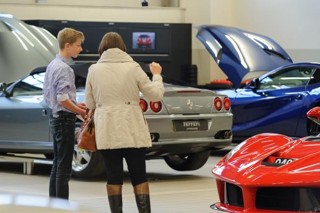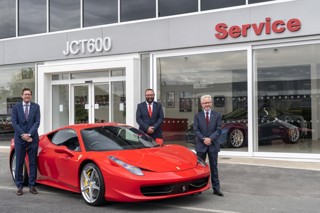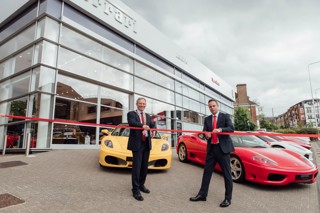But with Jaguar bleeding Ford white, and Land Rover driving the wrong way down the environmental road, only benevolent billionaires are welcome.
If Tata is to find its future with brands that so gravely handicapped Ford it will have to open the money taps.
The engineering union Unite has cautiously lent its support to Tata while regretting that events have come to such a pretty pass.
This lukewarm response is a reminder of how Ford had seen Jaguar and Land Rover, members of the Premier Automotive Group (PAG), as being in the vanguard of its move up-market.
The purpose of the strategy had been to lift Ford away from the price-based competition emerging in the Far East and towards the lush profits of the premium market segments.
Ford’s retreat means that it will now return to its mass market hinterland, most notably in the United States.
There, it still makes the most popular mode of personal transport, even if it just so happens to be a pick-up truck.
Ford will now re-attack the passenger car market, for so long foolishly neglected.
Asian rivals such as Toyota and Honda, that came to see Ford’s backyard as a land of milk and honey, may find that the next decade is a more bruising adventure.
Jaguar and Land Rover must feel like Moses cast afloat in the reeds, hoping that Tata is the princess that will save them.
This is not Tata’s first rescue of a fallen British hero, having acquired the remnants of British Steel just over a year ago, but it does represent a new level of ambition.
Its ambition could also extend to relaunching Rover – the deal included the rights to that brand.
#AM_ART_SPLIT#However, while steel production is a technically standard process, car production involves throwing away a perfectly good product every half-dozen years and betting the future on a new model.
Few companies have bet the firm, and lost, as many times as Jaguar.
The 10,000 advance orders for the new XF suggest that it might actually have sorted itself out, but now Tata must fund the other models.
The XJ and XK appear obsolete alongside the XF and need the same stylistic reworking.
The X-Type had originally been charged with bulking up the sales and sustaining a comprehensive dealer network.
This model has now been withdrawn from the American market and it is generally thought that there will be no replacement.
Without a high-volume model, the sales network – and adjoining service facilities – may not be economic.
Land Rover seems to be in ruder health with sales growing impressively.
However, its heavy models put it on the wrong side of the environmental equation and it may have to reconsider the fundamentals of its vehicle designs.
Tata’s huge resources give rise to the notion that the company is capable of taking over as the new sugar-daddy.
Yet, despite its fame as originator of India’s first indigenous car, Tata is on the far side of a chasm separating its own budget models from the prestige products made by Jaguar and Land Rover.
That’s not to say Tata doesn’t have premium experience elsewhere – its Taj hotel chain serves up luxury.
The jury is still out on Tata’s ultra-cheap Nano. Its greatest advance is not the car’s design but the impressive cost-reduction programme, the one technique that Tata could conceivably teach its new charges.
Fiat has shown interest in filling the technology vacuum, building on links it has elsewhere with Tata and hinting at collaboration in platforms and powertrains for Alfa Romeo.
#AM_ART_SPLIT#However, it is not a reliable future resource for Jaguar and Land Rover as the Italians would cherry-pick only the deals they could control.
In the long-term, Jaguar and Land Rover can only look to each other if they are to exploit the available economies of scale and scope.
If Jaguar does abandon the mass market then it may have to merge some of its sales and service operations with Land Rover.
On the technical side, engine ranges are already widely shared, despite differing power needs, but hybrids are urgently required.
More worryingly for the purists in both camps, the two companies will have to learn to share platforms across their ranges.
Following the lead set by Lotus and Aston Martin in versatile vehicle architecture, the two brands will need to twin their body design strategies.
This way, the aluminium XJ might help put the Range Rover on a diet without comprising the standards set by either.
Still, with technical resources so stretched, it is unlikely that any will feedback to Tata.
The best the Indian company can hope for is to get some of its money back.

















Login to comment
Comments
No comments have been made yet.